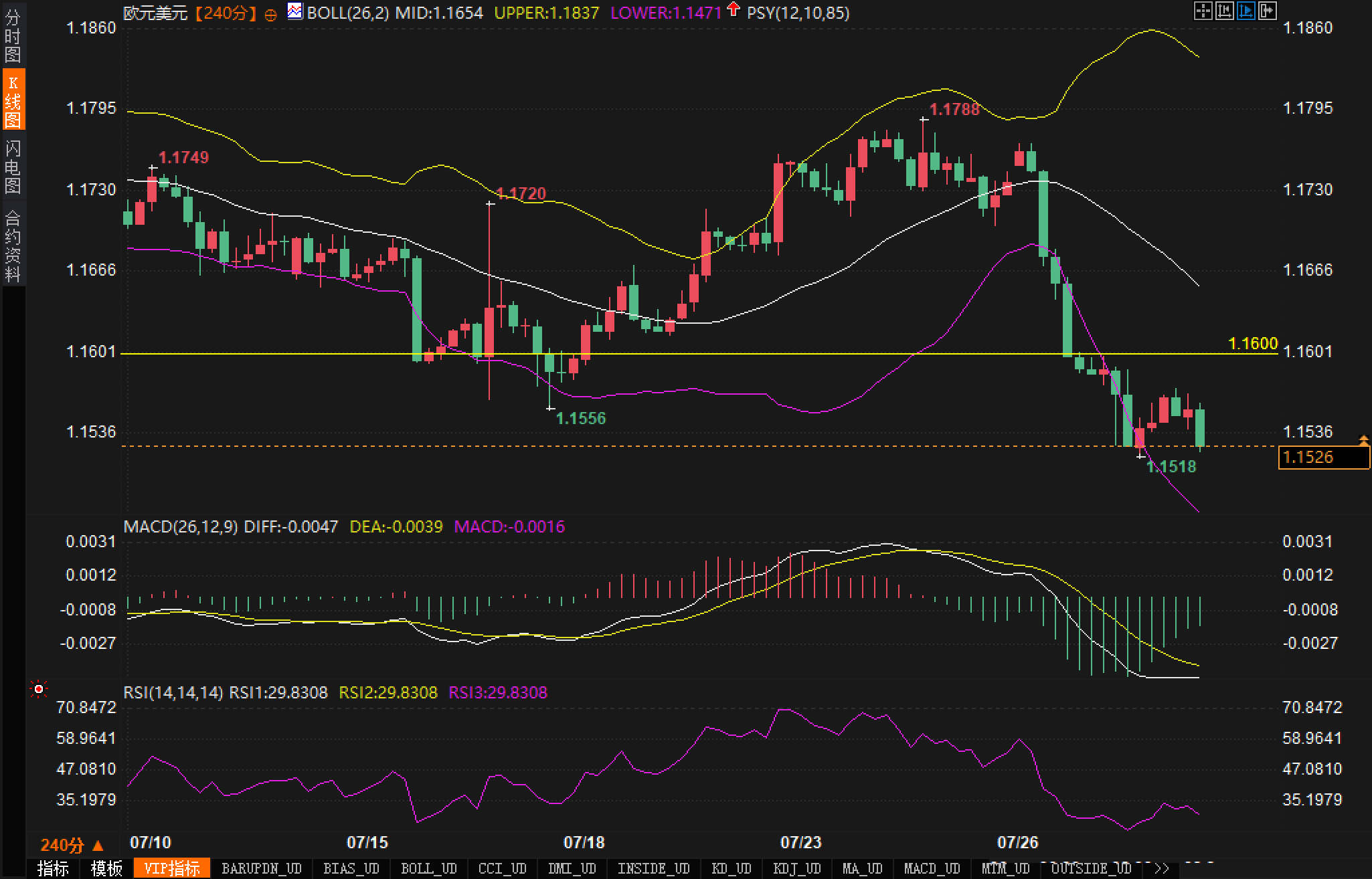Why can't the better-than-expected GDP data save the euro? Technical analysis provides the answer
2025-07-30 20:13:49

Fundamentals
From a macroeconomic perspective, the Eurozone's preliminary second-quarter GDP growth rate showed a 0.1% quarter-over-quarter increase. While this was lower than the 0.6% increase in the first quarter, it still exceeded market expectations of a 0% reading. German retail sales data also performed well, with a 1.0% increase in June, far exceeding the expected 0.5%, providing fundamental support for the euro. French GDP accelerated to 0.3% in the second quarter, also exceeding the expected stable growth forecast of 0.1%.
However, the conclusion of the US-EU trade agreement has had a significant negative impact on the euro. Markets remain cautious about the agreement's potential long-term impact, and demand for euro upside protection in the options market has declined significantly, reflecting a fundamental shift in market sentiment. Federal Reserve policy expectations also have a significant impact on exchange rate trends. While the market generally expects the Fed to maintain current interest rates, Chairman Powell's speech will be a key signal for future policy direction.
In the US, JOLTS job openings data indicated a cooling in the job market, falling from 7.77 million in May to 7.43 million, exceeding market expectations. While consumer confidence improved, the survey revealed continued concerns among Americans about the economic impact of tariffs. Preliminary GDP data is expected to show a 2.4% annualized growth rate in the second quarter, which may provide support for the US dollar.
Technical aspects:
From a technical analysis perspective, the EUR/USD pair is currently showing typical bear market characteristics. The current price is at 1.1526, having fallen below the support of several important moving averages.
The Bollinger Bands indicator shows that the exchange rate is currently trading near the lower band, with the middle band at 1.1654, becoming an important short-term resistance level. The upper band is around 1.1837, which will constitute strong resistance for any rebound.

The MACD indicator shows an obvious short position arrangement, the MACD line is at the -0.0047 level, the signal line DEA is -0.0039, the MACD histogram is -0.0016, and the overall indicator runs below the zero axis, confirming the current downward trend.
The Relative Strength Index (RSI) is currently reading 29.8308, entering the oversold zone, which typically signals a potential short-term technical rebound. However, in a strong downtrend, the RSI may remain in the oversold zone for extended periods, so an oversold RSI reading alone is not sufficient to confirm a trend reversal.
Market Sentiment Observation
Current market sentiment is clearly leaning toward caution, with euro long positions facing significant pressure. CFTC position data indicates a significant buildup of speculative long positions, creating the conditions for further downward corrections. Traders remain highly concerned about the uncertainty surrounding US-EU trade relations, and any policy signals could trigger significant exchange rate fluctuations.
The Fear & Greed Index showed a fear-biased reading on euro-related assets, reflecting market concerns about the euro's outlook. The volatility surface in the options market showed an increase in near-term volatility expectations, suggesting that traders expect greater price volatility in the near term.
Analyzing capital flows, US dollar assets continue to be favored, while Eurozone assets face capital outflow pressure. This divergence in capital flows further reinforces the pattern of a strong US dollar and a weak euro.
Outlook
Short-term outlook analysis suggests that from a short-term technical perspective, the exchange rate faces further downside risks, with key support at 1.1500. Although the RSI has entered the oversold zone, the strength and sustainability of technical rebounds may be relatively limited in the context of a strong downtrend.
The rebound is expected to face the test of the 1.1580-1.1600 resistance zone, and the stronger resistance level is in the 1.1650-1.1670 range; only by regaining the 1.1700 level can the exchange rate re-examine the medium-term trend direction.
Medium-term Outlook: Analysts believe that the direction of the EUR/USD exchange rate will depend primarily on the Federal Reserve's policy path and the evolution of US-EU trade relations. If the Fed maintains a hawkish stance, the widening interest rate differential will continue to weigh on the euro. Conversely, if the ECB is forced to adopt a more proactive policy stance under inflationary pressure, the euro may find support.
In terms of fundamental factors, the Eurozone's economic resilience requires more data support, and a single quarter's GDP data is unlikely to change the market's overall view of the euro. The specific terms and implementation details of the US-EU trade agreement will have a profound impact on the exchange rate.
From a medium-term technical perspective, if the exchange rate regains its footing above 1.1650, it may retest the 1.1750-1.1800 resistance area. However, analysts believe that before this, the bearish trend will still dominate, and the rebound may be seen as a new short-selling opportunity.
- Risk Warning and Disclaimer
- The market involves risk, and trading may not be suitable for all investors. This article is for reference only and does not constitute personal investment advice, nor does it take into account certain users’ specific investment objectives, financial situation, or other needs. Any investment decisions made based on this information are at your own risk.





















